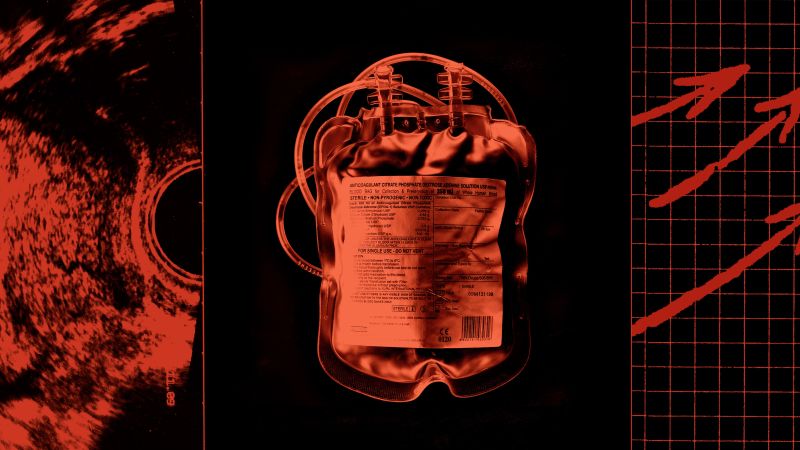This story was originally published by ProPublica, a nonprofit newsroom that investigates abuses of power. Sign up to receive its biggest stories as soon as they’re published.
In the wake of Texas’s stringent abortion ban, a troubling trend has emerged: more women are experiencing severe complications during miscarriages, with some nearly bleeding to death. Before the ban, doctors could perform a dilation and curettage (D&C) procedure to quickly and safely manage early miscarriages. However, due to its association with abortion, this critical medical intervention has become entangled in legal restrictions, leading to hesitancy among healthcare providers.
Reports have surfaced of women being discharged from emergency rooms without receiving necessary care, only to return in critical condition requiring blood transfusions. A ProPublica data analysis highlights a 54% increase in blood transfusions during emergency room visits for first-trimester miscarriages in Texas since the abortion ban was enacted in August 2022. This data underscores the heightened risks women face in the current medical and legal climate.
The Impact of Abortion Legislation on Miscarriage Care
The Texas abortion ban, which criminalizes the procedure at all stages of pregnancy, has inadvertently affected the management of miscarriages. The law allows for the removal of a “dead, unborn child,” but the ambiguity surrounding this definition during early miscarriages complicates timely medical intervention. This has led to delays in treatment, with potentially life-threatening consequences.
Dr. Elliott Main, a hemorrhage expert, noted,
“This is striking. The trend is very clear.”
The data reveals a sharp rise in sepsis cases during second-trimester miscarriages, further illustrating the dangerous repercussions of delayed care.
Case Studies: Real-Life Implications
Sarah De Pablos Velez’s experience in Austin exemplifies the dire consequences of these legislative barriers. Despite suffering from severe bleeding during a miscarriage, she was sent home from the emergency room twice without a D&C. Ultimately, she required blood transfusions to survive.
“What happened to me was just so wrong,” she told ProPublica. “Doctors need to be providing care to pregnant women — that needs to be a baseline.”
Another tragic case involved Porsha Ngumezi, who died of hemorrhage after being denied a D&C at Houston Methodist Sugar Land. Her case highlights the life-threatening risks posed by the current legal framework, as medical professionals hesitate to perform necessary procedures.
Expert Opinions and Medical Guidelines
Medical experts have expressed concerns over the cautious approach adopted by many healthcare providers in Texas. Dr. Anitra Beasley, an OB-GYN in Houston, emphasized the challenges doctors face in diagnosing miscarriages under the threat of legal repercussions.
“What ends up happening is patients have to present multiple times before a diagnosis can be made,” she explained.
The reliance on ultrasound images alone, as recommended by the Society of Radiologists in Ultrasound, often delays treatment, increasing the risk of severe complications.
The American College of Obstetricians and Gynecologists (ACOG) advises a more comprehensive approach, considering clinical factors alongside ultrasound findings. However, fear of prosecution has led many doctors to adhere strictly to radiological criteria, sometimes at the expense of patient safety.
Legislative Responses and Future Implications
In response to reports of preventable deaths, the Texas Legislature passed a bill clarifying that doctors can perform abortions in life-threatening emergencies. However, many healthcare providers argue that the law does not adequately address the complexities of miscarriage management. The fear of criminal charges continues to influence medical decisions, often to the detriment of patient care.
Amanda Nagle, a doctoral student studying blood transfusion data, remarked,
“If people are seeking care at an emergency department, there are serious health risks to delaying that care.”
Her forthcoming paper in the American Journal of Public Health aims to further explore these risks.
Conclusion: Navigating a Complex Medical Landscape
The Texas abortion ban has created a challenging environment for both patients and healthcare providers. As the medical community grapples with these legal constraints, the need for clear guidelines and protections for doctors becomes increasingly apparent. Without such measures, women experiencing miscarriages in Texas and similar states will continue to face unnecessary risks to their health and well-being.
The stories of Sarah De Pablos Velez and Porsha Ngumezi serve as stark reminders of the human cost of legislative restrictions on medical care. As the debate over abortion rights and healthcare continues, the focus must remain on ensuring safe and timely medical interventions for all women.
